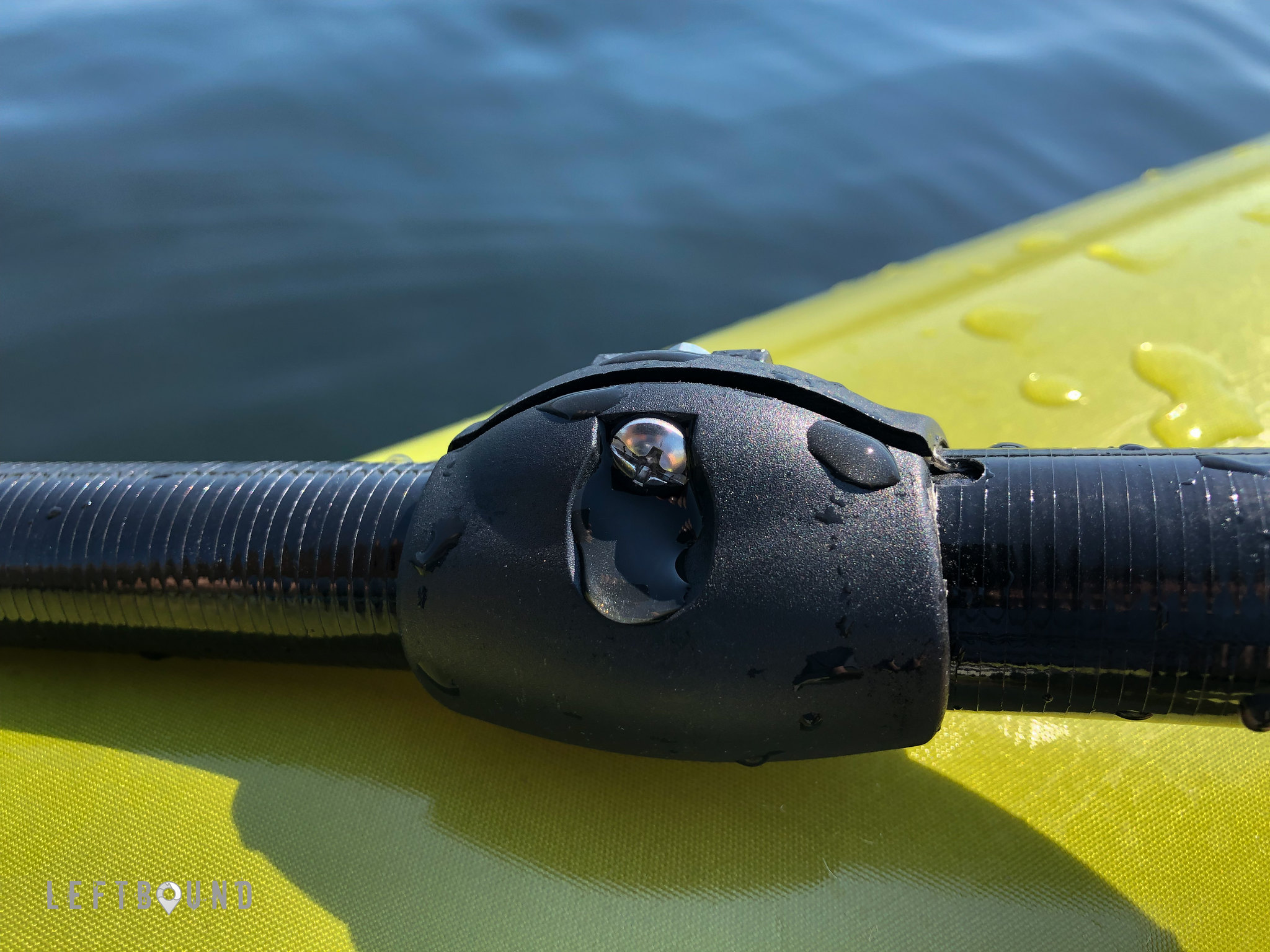I had been on the lookout for some months for a robust, packable paddle, to match my rather lightweight Anfibio Delta MX. I made some inquiries to few manufacturers of custom paddles, to find out whether it would be possible to source a paddle, for a reasonable cost, with full adjustability and sufficient length at, say, sub 500 grams. Perhaps somewhat a novelty item, with similarly featured paddles already in the market, weighing only few hundred grams more, but I was interested in finding out if such a lightweight paddle could be made and would even make sense.
Outcome was that customizing some of the currently available carbon paddles, it would be possible to reach, with a reasonable range of adjustments (length-wise) and weight as low as sub-700 grams, but price would become a significant factor. Hence I never pursued getting one put together, but parked the idea and happily kept on paddling with my 5-piece Sawyer paddle.
As it happens, folks at the Packrafting Store, ever growing the Anfibio line of packrafts and accessories, had also been contemplating with the idea of such a paddle, and this spring launched a new ultralight paddle, especially targeted for their similarly ultralight Nano SL packraft - the Anfibio Fly. I was eager to get one in for a trial, as it seemed to have a solid balance of features, weight and cost.
Per the specifications, the Fly is 460 grams light and 49 centimeters short (packed) 5-piece paddle. Adjustable freely both in length, between 178 and 210 centimeters, and for the feathering (blade angle), it packs a punch for anyone looking for a versatile tool for packing and paddling out with minimal bulk and weight.
With a slimmed down shaft, 24 millimeters in diameter, it still sits well in hand, even for a guy like me with rather long fingers. I had my doubts initially especially about this, but during the few months of using the paddle, I’ve never experienced or noticed any discomfort, and quickly got used to this narrower shaft.
Blades are made of nylon, which, as opposed to crafting those from carbon fiber, help tremendeously in keeping not just the weight, but also the price at an acceptable level. Blades do flex quite a bit if pulling by hand, which is expected, but are robust and I’ve not felt I’d need to watch over them (and I haven’t). Their shape gives a solid purchase in water, and while there is some flex, it doesn’t have a noticeable impact on the overall “performance” of the paddle - do remember that this is an ultralight paddle not comparable with any real performance-oriented paddles. I lended the paddle over to my friend with extensive experience on kayak paddling, and paddles, and while he did pay attention more than myself to the flex, he agreed it felt solid and robust for such a lightweight paddle.
As the shaft is fully adjustable in length, there aren’t any shortcomings also when it comes to multi-use. I use mine as a center pole for my pyramid tent (Ultamid 4), where the 178 to 210 centimeter range is perfect for a fully adjustable pitch in different weather conditions. In water, I use nothing but the maximum, as it gives me the most comfortable reach over the tubes - your mileage may vary, also depending on the raft’s tube size, seat height and your personal dimensions. It would be nice to have the feathering angles etched into the ferrule lock (or at least 30 and 60 degree marks in it), but that’s a minor detail that’s easy to add yourself, if you miss the typical markings.
The spring locks connecting the shafts and the blades are well positioned, and there is sufficient overlap to create a solid connection that does not induce unnecessary flex and ensures longevity and sufficient strength. And luckily all parts are fully interchangeable (except of course for the middle piece with the locking mechanism), so you won’t be annoyed pushing two parts together only to notice that part is wrong way around or needs to be connected to that OTHER blade you’re not currently holding.
During the extended use over few months, including pushing against the wind through the coastal swell in the archipelago, paddling through rivers and small streams and crossing lakes, this paddle has performed without trouble, and I cannot think of anything I’d change.
As it is, Fly is a solid choice to complete a packable and lightweight packrafting kit, and will work nicely also as a backup paddle (which you should always bring on an extended excursion or expedition). Bundled with a lightweight (or an ultralight) packraft, such as the Delta MX I have, and perhaps a Buoy Boy PFD I myself use, it brings you back to the origins of packrafts as portable, but not heavily performance-oriented vessels, for boundaryless exploration.
❯❯ Flickr album: Anfibio Fly Paddle.








